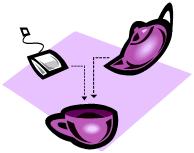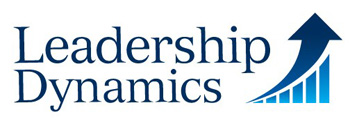Articles
Published by Nancy Clark on Apr, 13, 2011 under Uncategorized.
Here is a great article that I thought you would find interesting about increasing the top line — good basics and good approaches that make a difference... Nancy
Four Simple Rules To Double Your Sales
By Geoffrey James | April 12, 2011
All sales professionals think that they’re focused on the customer. However, in many cases, they’re actually focused on something else all together, like communicating product knowledge or convincing the customer to buy. Being customer focused means putting aside all of that and actually being 100 percent present for the customer.
This post, based upon a conversation with Nancy Martini, CEO of the training firm PI Worldwide, describes four key rules for being customer-focused at different stages in the sales cycle. Please note that this is incredibly valuable information that, when mastered, will double or triple your close rate, and set you up for future sales from your current customers.
So please take this post seriously. Bookmark it, and refer to it often.
RULE #1: Use Research as a Platform for Learning
Most sales pros know that they should walk into a customer engagement only after doing research into the customer’s situation. However, the way that you use that knowledge differs greatly depending upon whether or not you are focused on the customer or focused on yourself.
Sales pros who are focused on themselves typically begin a customer engagement by lecturing the customer, in the hopes that the customer will be impressed with the fact that the sales pro has done his research. For example, a sales pro might open a customer conversation like this:
My research reveals that your firm is probably losing money because of poor inventory control. Since your industry is currently under stress due to the weak economy, you may need our product to help you fix this problem. That’s why I’m here to talk with you today.
By contrast, sales pros who are focused on the customer, merely use research as a way to bridge into a meaningful conversation, like so:
It’s my understanding that your industry, in general, has challenges connected with the weak economy and difficulties in controlling inventory. However, I’d like to know how you view the situation and to what extent that influences what’s going on in your own manufacturing facilities.
Can you see the difference? The first approach makes the sales pro sound like a know-it-all who’s going to tell the customer how to run his business. The second approach shows that the sales pro did the appropriate research, but the request to hear about the situation “from the horse’s mouth” shows the customer that the sales pro doesn’t assume he knows more about the situation than the customer himself.
RULE #2: Ask Questions that Create a Broader Context
Most sales pros know that selling involves asking meaningful questions, and many also know the open-ended questions are generally more effective than closed-ended questions. However, there are actually three levels of questioning:
• Level #1. Close-ended questions. These have short, definite answers like “yes” or “no” or a specific bit of information.Close-ended questions can be useful, but they tend to create a lull in the conversation, forcing the sales pro to segue, often awkwardly, into the next line of inquiry. Example: “How many widgets do you use every year?”
• Level #2. Open-ended questions. These are intended to solicit a more detailed response from the customer. However, sales reps often craft open-ended questions to lead the customer into considering a particular product. As such, they typically result in a short answer that echoes the response that the customer assumed (correctly) that the sales pro expected to hear. Example: “What are your needs when it comes to widgets?”
• Level #3. Strategic questions. These are questions that invite the customer to expound upon a situation. They treat the customer as the expert and naturally lead towards a deeper conversation that can lead towards a collaborative sales opportunity. Strategic questions usually begin with one of the following phrases: tell, share, describe, explain, explore, or help me understand. Example: “Tell me about how your company uses widgets.”
In order to be customer-focused, you should always prepare two or three strategic questions for each customer meeting.
These strategic questions will reveal valuable information that will prove useful throughout the sales cycle. More importantly, they will make customers feel as if they are guiding the discussion.
RULE #3: Present Solutions in Terms of Customer Value.
It’s amazing how many sales professionals falter on this one. There are three general ways that sales professionals can present a solution:
• Feature/Function. You describe the offering, what it does, and why it’s a quality offering. This is often ineffective, because customers are far more interested in their own business and their own problems and may not be able to understand how or why a given feature or function might be meaningful to them. Example: “Our widgets are manufactured locally.”
• Feature/Benefit. The sales pro describes a feature or function, but ties it to a particular benefit to the customer. While this is better than the feature/function approach, the feature/benefit approach does not put the feature into the context of the customer’s business. Even if the customer recognizes the benefit, it’s not immediately apparent why that benefit is of value to the customer. Example: “Our widgets are manufactured locally, so you can be assured of an immediate supply regardless of demand.”
• Value/Benefit. The sales pro summarizes the value that the customer would like to achieve through the offering, and the ties that value to a specific benefit of that offering. This approach allows the customer to immediately visualize the positive financial impact of buying the solution. Example: “You’ve explained how manufacturing delays have cost your company $10 million over the past year and that those delays are the result of the inability to get widgets in a timely manner. Because our widgets are manufactured locally, we can provide them whenever you need them with less than a day’s notice.”
Can you see the difference? When you present value/benefit you are telling the story from the customer’s perspective, rather than the perspective of your firm and its offerings.
RULE #4: Consider Closing the BEGINNING of the Sale.
Most sales pros see closing the deal as the end of the sales process. From their perspective, they’ve worked hard by researching the customer, investigating the customer’s needs, and presenting a viable solution. The sales pro is often a bit worn out by this point, and simply want to know whether or not the customer will buy, so that they can either write up the order or move onto the next prospect.
That’s ironic, because it is at this point that the customer is fully awake and aware. It’s relatively easy for a customer to consider alternatives, discuss possible solutions, and sketch out the basic parameters of what might happen.
However, when it comes to the point of actually making a decision, suddenly the customer’s money and budget is on the line. This fact energizes the customer right at the point when the sales pro is beginning to wind down in expectation of a final decision.
If you want to be customer, focuses, you see closing as a collaborative process that involves working together to ensure that the final deal makes sense.
If the customer surfaces objections, a customer-focused sales pro uses further strategic questions to investigate and clarify the situation. That investigation is then reflected in a new or more detailed expression of the value of the offering to the customer.
NOTE: The rules in this post are based upon a conversation with Nancy Martini, CEO of the training firm PI Worldwide. I’m a huge fan of her work and am, in fact, working with her on a book project. I’ll write more on this as the project moves forward!
Published by Nancy Clark on Mar, 23, 2011 under Leadership, Talent Management, Uncategorized.
I thought you would enjoy an article from Inc. —
7 Tips for Using Personality Tests to Hire
Personality testing can be very useful for small businesses, where the impact of hiring the wrong worker has a disproportionate effect.
By Kay McFadden
Mar 21, 2011
Personality tests – also known as behavioral assessments and predictive tests — have come a long way since “Miracle on 34th Street.” That’s the film where a nice old man who maintains he’s Santa Claus is fired from Macy’s after flunking a dubious applicant quiz given by a self-styled shrink.
Good tests today are about more than qualifying a candidate for a slot, says Dr. Todd Harris, director of research at PI Worldwide, Wellesley Hills, Massachusetts, which has furnished testing to organizations of all sizes around the globe since 1955.
“At PI, we call it ‘seeking a multi-level match,'” says Harris. “By that, we mean you’re not just hiring someone for a job; the person needs to fit in other ways. There’s the job, there’s the fit between the individual and supervisor, there’s the company culture, and finally, there’s the surrounding community.”
But to choose the right tool and maximize its benefits, employers often must begin by broadening how they think of the process. Here are seven things to consider when deciding to use or not use personality tests.
1. Great executives aren’t great at hiring.
This research is conclusive, according to all the human resources specialists we interviewed.
“The people most confident in their abilities to predict and measure who will be successful at a given company or role actually tend to be the least good at it,” says Harris. “There’s an over-confidence with a direct correlation to lack of success, whether the business is big or small.”
Many small business owners have great confidence in their abilities because of what they’ve achieved, and deservedly so. Just be aware it doesn’t equal smart hiring. Small businesses can be further hampered by the lack of an in-house HR professional (more on that later).
So a test furnishes perspective, balance and fairness. “The data is unequivocal,” says Harris. “If you use a consistent, well-validated approach versus a gut decision, you will make better hires over the long run. This is beyond dispute.”
2. Hiring is about needs, not likes.
This may sounds like a variation on the above, but it’s actually a radical reworking of how testing can help your business.
Stephen Shapiro is the author of four books on workplace innovation. His latest work is Personality Poker, which was inspired by the premise that executives gravitate to people who think like them – and that’s a problem.
“Everyone thinking the same way creates efficiencies,” says Shapiro, who formerly led a 20,000-person innovation practice at Accenture. “But today you want innovation and growth to be competitive, and that can’t happen in a monolithic culture.”
Personality Poker contains tests and exercises designed to pull together a “full deck” of talent, using card suits – heart, diamond, spade, club – to identify different employee types. Like the newer wave of personality tests, it helps circumvent ingrained likes and dislikes.
“When you’re an entrepreneurial organization, you especially need to make sure you hire people with a broad range of styles,” says Shapiro. “So instead of weeding out people that don’t fit, the recognition today is that different roles require different characteristics.”
3. Testing can provide good ROI.
Every manager knows the cost of employee turnover is high. Still, that often had to be balanced against the costs of tests and accompanying services. In the mid-2000s, several factors emerged to make testing a viable option for small businesses.
First, tests came back into vogue after losing favor in the 1990s because they were seen as too conformist and insufficiently aware of emerging values like individuality and diversity. The new tests quantify these and other traits that make them more suited to small businesses
Second, the online world exploded. All sorts of testing choices came within easy reach of business owners. Companies such as Hire Success furnish downloadable software that enables managers to customize and administer tests and send the results to the company for evaluation at fees mostly below $500.
Third, a proliferation in online job postings – even those a company didn’t advertise – combined with the Great Recession have flooded businesses with job-seekers in recent years. The resulting uptick in equally qualified applicants necessitates more tools for sorting them out.
4. Tests still need expert assistance.
It’s clear almost any manager can give and interpret a personality test. But that doesn’t mean it’s a good idea. For starters, there are legal concerns.
The Equal Employment Opportunity Commission has issued criteria regarding the design and evaluation of testing. So has the Supreme Court in its 2009 ruling, Ricci v. DeStefano. While hiring a third party doesn’t absolve a business from liability, it underscores the necessity of using people with substantial knowledge in this area.
That doesn’t mean you have to go out and hire a VP of Human Resources. Many testing consultancies now tailor their products especially for small businesses. They’ve also scaled down fees accordingly.
PI Worldwide, for example, offers a version of its Predictive Index testing and services. A PI team of consultants will train key managers at a client firm to administer and analyze in-house for a starting fee of about $7,000, including unlimited use of a job profiling tool.
5. Tests alone are not enough.
Testing is not a magic one-stop solution, warns Annette McLaughlin, vice president of talent, coaching and outplacement for Response Co., a mid-to-senior recruitment firm in New York City.
“My perspective of bringing people on board is that there are multiple factors that can impact your performance and you need multiple steps in the hiring process to make an informed decision,” says McLaughlin.
She outlines the steps as follows: resume; application; interviews (minimum three, including initial phone interview); employment and credential verification; background check if required; reference check (minimum two); income verification; assessment tool; team meeting.
McLaughlin advises assessment, i.e., testing, occur mid-process. Others agree, since tests can yield results that reshape a job or even re-think a department. As Shapiro puts it, “The hiring process needs to consider the business process.”
6. So how do I choose a test?
This question was put to Harris, who’s an industrial psychologist. He suggested the following checklist, edited here for brevity:
a. What is the assessment designed to measure and accomplish, and how will that benefit the organization?
b. Does the assessment come with an accompanying job analysis tool that allows for the thorough identification of a job’s requirements?
c. Is the assessment free of bias with respect to the respondent’s age, gender or ethnic group?
d. Is the assessment reliable? That is, are people’s scores on it consistent and repeatable over time?
e. Is the assessment valid? That is, does it effectively predict important workplace behaviors that drive metrics such as sales, customer satisfaction and turnover?
f. Is documentation supporting questions c, d and e available in the form of a technical manual or equivalent document?
g. Is research on questions c, d and e ongoing?
h. What are the key “implementation issues” such as cost, time it takes to complete the assessment, data security, scalability across the organization, ongoing support from the vendor (does the vendor understands your business challenges), and degree of client self-sufficiency/knowledge transfer?
7. Testing starts before, during and after testing.
Once you commit to testing, assess your current staff as well as company strengths and weaknesses. That way, you’ll find a test that fits the need.
“The first step is defining the job challenge,” says Shapiro. “Einstein said if he had an hour to save the world, he’d spend 59 minutes identifying the problem and one minute saving it.”
Testing also can elevate the interviewing process – the “during” part.
“The information from these tools can be used to ask more informed questions that help you dig deeper,” says McLaughlin. She reminds managers that the same test must be administered to all candidates for the same job to be non-discriminatory.
Finally, testing should be a guidepost and not a fixed label.
“It’s important for a small business to keep in mind that both the person and more so the job and its role are not static these days,” says Harris. “They are dynamic and malleable and evolve over time. People increasingly want to put their own signature or stamp on a job. Savvy organizations allow them to do that and realize in some ways those targets they are trying to hit are moving targets.”
http://www.inc.com/guides/201103/7-tips-for-using-personlity-tests-to-hire.htm
For hiring instruments supported by Dr. Todd Harris, contact us at Leadership Dynamics, Inc. +1 925.831.9100 or email us at info@leaders-inc.com.
Published by Nancy Clark on Mar, 13, 2011 under Uncategorized.

The rational response is a resounding “no.” Customers expect value and expect service. Clearly, the “fit for use” argument comes into play. The service I expect from Burger King is clearly different than what I expect from a 5-Star restaurant. Yet, those businesses that astound me with unexpected, great service lock me in for life; and, those that don’t commit me to a life of sharing their horror stories of bad service and annoying automated phone prompts. I share one of each with you here.
Three or four laptops ago, I purchased an IBM (Lenovo) ThinkPad. After a year or so of brutal usage, my monitor expired. It was a quick painless death, but a major tragedy since my business life is in my computer. Naturally, I was on the road and stranded. I called IBM and told them my problem (customer service lesson #1 – I got to speak with a real person). I explained my situation. The customer service representative told me they would have a box shipped to my house the next day (Saturday) and that the courier would wait while I packed my laptop for shipment to an IBM repair depot (customer service lesson #2 – recognize and acknowledge the customer’s urgency). The box actually did arrive on Saturday (customer service lesson #3 – follow through on your promises), but I decided to have my IT person backup the hard drive before I shipped it. So, instead, I called the courier and shipped the faceless laptop on Monday. With a lump in my throat, I waved good bye to my laptop and my business, not knowing when or if we would ever be reunited.
What occurred next was astounding to me. On the following day, I received a voicemail requesting my signature for delivery of my repaired computer. Unfortunately, I was not home and wisely they would not leave the computer on the doorstep. So, on Wednesday morning they delivered it – 100% healed and ready for more abuse. To this day, I cannot fathom how they received, repaired and reshipped my laptop in less than 24 hours (customer service lesson #4 –exceed your customer’s wildest expectations). Because of IBM’s (Lenovo) outstanding customer service, I am a customer for life (or for as long as they meet my expectations).
Now, fast forward to the present. I recently upgraded to a new ThinkPad and started installing upgraded software. I could not find my security software information and was getting quite frustrated. I tried to talk with a representative of Panda Security Software – I now believe they do not exist. After wasting too much time trying to find a phone number, I gave up and decided to just purchase new on the website. With great difficulty, I eventually was able to install the newest, greatest, globalist security software they had to offer.
Within two weeks of using the software, I was hit with a virus that corrupted my Windows 7 profile. All my execute files were freaking out and my laptop was rendered unusable. My IT guru checked it out and discovered that this virus was several years old. How could that be? My security software was new and improved. So I started my attempt to contact Panda. I reviewed my sales receipt, their website, everything. No phone numbers for support, only a sales number. Maybe they could put me in contact? Optimistically, I called the number. I answered the annoying IVR questions, pressed the various numbers and waited, and waited, and waited. Doing other work, I kept the line open. After 90+ minutes on hold, I gave up. And, this was for sales!? How silly of me to think I would ever get a real person for customer service.
Not willing to gamble my business on security software that didn’t keep my laptop secure even against the old stuff or to gamble on a company that provides no customer service, my IT guru removed Panda and replaced it with NOD 32. I then started the process to request a refund from Panda for “returned” software. Now, all of a sudden, I am receiving an abundance of email – answer this survey, no we can’t refund, here is the refund form, etc., etc. Panda once was my security software of choice. Now, with no service, no customer.
Have our customer service expectations dropped as a result of the Internet? Is it just too costly to service the products sold? Or, are engineers and accountants running the businesses and cannot comprehend human contact? Maybe they need to understand that technology is not the consumer, humans are.
Published by Nancy Clark on Nov, 12, 2010 under Uncategorized.
 Even in these economic times, employees are quitting their jobs and it may be costing more than you know!
Even in these economic times, employees are quitting their jobs and it may be costing more than you know!
At a recent cocktail party, I was pleased to hear a change in the buzz. Finally, the conversations were taking a break from all the political campaigning. Instead, the chatter was focused on the economy. Several debated whether we were headed for major inflation or deflation. Others underscored the need to create more jobs. Many nodded in agreement to the various comments: “People are lucky just to have a job.” “Employees should just hunker down and ride out the storm.” “We sure don’t need to worry about turnover right now – no one is going to leave in this bad economy.”
Really? As usual, I had to chime in … people are changing jobs at high levels and I predict it will get worse. The Bureau of Labor Statistics indicates that across all sectors, annual voluntary turnover is tracking at a bit over 20%. That is pretty significant and pretty costly–the U.S. Department of Labor (DOL) estimates that it costs a company $370K to replace one employee with a base salary of $90K per year. This “replacement cost” number is much larger for: (1) top-performers, or (2) more senior positions.
Based upon the research, consider a company with 100 employees and an average $90K base salary:
Replacement cost/person= $370,000
20% of 100 employees= x 20
Total replacement cost for one year= $7,400,000
That seems astronomical to me. So even if the DOL is off by 50%, that number is still significant. For a 100 employee firm, that could well wipe out the net profit for that year. How much do you think it is costing your organization?
A key basic for companies is to hire the right people for the right positions and then treat them right so that they perform and stay. Leaders need to realize that employees leave managers first and companies second. Although they claim money or opportunity as a cause when asked in an exit interview, the real cause is their manager. The real reason is captured through post interviews six months later – not feeling appreciated by my manager.
By providing human capital analytics and training for leaders and managers, companies can minimize the turnover and save those expensive replacement costs. To me, there is nothing more rewarding then creating positive and high-performing organizations.
Published by Nancy Clark on Oct, 15, 2010 under Executive Coaching, Leadership, Leadership Development, Leadership Issue, Leadership Training, Professional Development, Talent Management, Talent Resources.

Why they do it and what you can do about it.
As someone who facilitates a lot of meetings and leads a lot of workshops, I get the opportunity to meet a variety of business people. On occasion, I run into an employee who behaves badly. Fortunately, it doesn’t happen very often, but when it does, it can be a great learning opportunity for both the “tantrum thrower” and the “tantrum receivers.”
However, I had a recent situation that even surprised me. Not so much because the person behaved badly, but, I am embarrassed to say, I didn’t handle the situation as I normally would have. I guess it just highlights that even a seasoned facilitator/coach can be off her game.
Let me paint the picture for you while protecting the guilty. I was leading a workshop a few weeks ago for an executive team. I was sharing and transferring the talent management analytics that we use and share with our clients. These are incredibly accurate and highly validated tools with more than 55 years of research and support behind them. One manager in the session weighed in early that he didn’t believe that the tools were accurate and basically thought the whole thing was useless. No surprise, his profile predicted that he would be skeptical. So, I forged ahead.
The day continued, but his questioning or “inquisitiveness” actually crossed the line into rudeness. Not just to me, but to the company and to the industry. He continued to throw barbs and to taint the learning for others. His behavior and comments went unchecked.
About two years ago, I had another similar situation. A cross-functional team was trying to come to consensus on endorsing a major software acquisition. The team had become dysfunctional due to one member. I was brought in to get the team functioning and to facilitate the final decision meeting. In the middle of the meeting the one member disrupted the meeting and personally insulted everyone on the team (a basic business tantrum). I immediately stopped the meeting, suggested we all take a break, and proceeded to meet privately with the tantrum thrower.
I shared that I was there to help him and the team, but that his behavior was not acceptable. I told him that I would assist him, but that I would not let him return to the meeting unless he apologized to the whole team. He agreed and rejoined the meeting by apologizing to the team publicly. There is a lot more to the story, but the bottom-line is that you cannot ignore bad behavior because that reinforces it.
So what did I do wrong a few weeks ago? I did not stop the workshop and I did not let him know that he crossed the line into rudeness. I don’t know where my head was at, but I clearly did not handle the situation as I should have. I should have let him know that I welcome his questioning, but I would not tolerate his insolence. I should have “invited” him to leave the workshop … his choice– behave professionally or leave. I feel badly; I reinforced his childlike behavior.
So, why do some employees behave badly? First, most of them don’t realize they are doing it. They have behaved that way for years and think it is acceptable. Others are just not emotionally mature and/or self-aware. Some don’t have the energy or gas-tank to control their tantrums. And, still others may have personal agendas that they are trying to promote or are frustrated that they are not getting their way. Regardless, there are things that you can and should do:
- Don’t get mad and don’t take it personally
- Stay calm
- Stop the meeting or conversation
- Remove the person from the situation
- Let them know you are trying to help them and want them to succeed
- Reflect how their behavior was being received and the damage it was doing to him/her professionally
- Be clear that the current behavior will not be tolerated
- Provide options (e.g., stay and act professionally, apologize, or leave, meet with his/her supervisor, document the event)
Note: If the employee crosses the culture and/or value lines of the organization, more severe action may need to be taken.
My hope is that you do not have to deal with tantrum throwers; but if you do, don’t ignore it and don’t think you can cajole them out of it. I learned my lesson again!
Please share your comments and thoughts on Nancy L. Clark’s blog.
Published by Nancy Clark on Sep, 1, 2010 under Competition, Competitors, Executive Coaching, High Potentials, Innovation, Leadership, Uncategorized.
 Nothing is better for business than a worthy opponent!
Nothing is better for business than a worthy opponent!
By Nancy L. Clark
Good competitors make you better; bad competitors can pollute the industry. Just ask Chevron, Shell, and others. The embarrassing reaction from BP (British Petroleum) to the disaster, amplified by its poor safety record, hurts not only BP, but also the whole industry – guilt by association runs rampant.
Some might be surprised to know that many of the top oil companies immediately offered their services to BP in order to find a solution to the raging gulf tragedy. Having consulted to one of the top and most safety conscious energy companies in the world, I can attest to their concern for the gulf and to the embarrassment caused by BP to the energy industry. Even prior to the gulf disaster, the general feeling was one of distress over BP’s safety.
The cost to the environment and to the industry is huge. BP’s action or lack of action hurts everyone – wildlife, business owners, workers, and competitors. Consequently, good, responsible, and safety conscious competitors are best.
That is true even on a smaller, more local level. I recently heard a story that truly epitomizes über competition. To recount the story, a farmer enters his crop each year at the state fair. And, each year he wins. At the conclusion of the fair, he gives away his prize-winning seeds to any and all, even his competitors. When asked why he would do such a foolish thing, his response is simple. He recognizes that his crop and his seeds are impacted by the farms around him — the better their crops, the better his crops. By helping them, he helps himself, and improves the whole market.
A healthy rivalry can be personally life changing as well. I remember my grammar school competitor, Nancy Tague. She was the smartest girl in the school. Unknowingly, she made me better. I studied harder because I wanted to beat her in math. It wasn’t vicious on my part. But I knew that I better hit the books a little harder, think a little deeper, and try a little more. Without Nancy, I most likely would have slacked off. Thank you Nancy, wherever you are. You were a worthy competitor … and because of you I am better.
So next time you feel out maneuvered by your competitor, be thankful. Take it as a gift and use it to up your game!
Please share your comments and thoughts on Nancy L. Clark’s blog.
Published by Nancy Clark on Jun, 3, 2010 under 4G, Baby Boomers, Generation X, Generation Y, Leadership, Leadership Development, Leadership Issue, Sucession Planning, Talent Management, Talent Resources, Talent Wars.

For the first time in history, we have four generations employed simultaneously!
By Nancy L. Clark
Pose a simple question—how did Kennedy die? And you will hear a variety of answers in today’s workplace. “He was assassinated in Dallas by Lee Harvey Oswald.” “He died in a private plane crash off Martha’s Vineyard.” “Who’s Kennedy?” These varied responses may indicate that you are working in a 3G (three generation) or 4G (four generation) environment.
With so many generations working together, the benefits can be great, but so too can the challenges. Within one generation the experience and approach to work can be very different; spread among four generations, we may not even seem like the same species.
“This new generation thinks differently.” “They don’t have the same work ethic.” These comments may seem like complaints, yet research is supporting that there are differences. And, I suspect those or similar comments are made about every new generation. We are all different and we should be. Our experiences, life events, etc. are all different. The challenge for organizations is how to leverage those differences and optimize the benefits.
What is your workplace doing to leverage the generational differences? The first step is to understand the differences. To read more and to see a quick “generational cheat sheet”/table, go to Welcome to the 4G Workplace
I invite you to share your comments and thoughts.
Published by Nancy Clark on May, 15, 2010 under Executive Coaching, Leadership, Leadership Development, Leadership Issue, Leadership Training, Professional Development, Sucession Planning, Talent Management, Talent Resources.

Is your company world-class or worst-class in planning and managing its talent resources?
Use the scale below to measure how well it is doing.
By Nancy L. Clark
The inevitable exodus of the baby boomers has created a heightened awareness for succession planning throughout the corporate world. Despite the predictability of massive retirements, there is an ongoing shock and awe heard around the virtual water cooler … to read more and to rate your company using Leadership Dynamics Succession Continuum™ go to How Well Does Your Company Manage Succession?
Published by Nancy Clark on Apr, 15, 2010 under Creativity, Entrepreneur, Innovation, Leadership, Leadership Development, Leadership Issue, Talent Management, Talent Resources.

By Nancy L. Clark
Now more than ever our organizations need new ideas, new approaches, and a re-commitment to America’s entrepreneurial drive. As leaders, we need to cultivate it–not kill it! Innovation does not simply occur just because we hired innovators or spent money on creating an innovation room. It is much more than that–we need to find it, support it, protect it, and develop it—not kill it.As a management consultant with more years than I am willing to admit, I continue to be astonished by the innovation killers that thrive in many, if not most, organizations. A majority of these “innovation murders” are committed unintentionally. Regardless, the result is the same—ideas are slaughtered and creativity retreats to the organizational underground.
The good news is that your organization is likely brimming with creative ideas…unfortunately, you and/or your managers may be inadvertently suppressing the creativity. Given today’s economic environment, you can ill afford to limit thinking or new ideas. If your company’s creative “spigot” is not open and flowing freely, why not? And, what is it costing you? The answers may surprise you. To read more go to Are YOU killing the creativity in your company?
Published by Nancy Clark on Mar, 19, 2010 under Uncategorized.
 Great leaders are like teabags — you never know how strong they are until they’re in hot water!
Great leaders are like teabags — you never know how strong they are until they’re in hot water!
By Nancy L. Clark
There seems to be a lot of talk these days about teabags and teabag parties. I, however, propose we start a different movement – a teabag leadership movement. Nothing political, instead the purpose will be just to focus upon improving leadership overall (not that both the Democrats and the Republicans couldn’t greatly benefit from such an effort).
So why teabags? Well, the true test of a leader is how well s/he performs in hot water. And, right now there is an abundance of opportunities to be in hot water. Whether it’s the economy, engineering flaws, accounting errors, whatever, most public and private leaders feel some degree of heat. Some handle hot water well, many don’t. To read more go to March 2010 –Tea Bag Leadership










